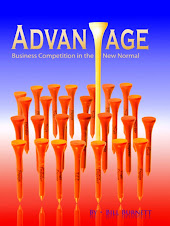(An excerpt from “Advantage: Business Competition in the New Normal”)
Supersynthesizers
Supersynthesizers have the ability and inclination to see the problem from different angles. As a young physicist, Feynman was nominated to the Manhattan project because of his legendary problem-solving/synthesis ability. Oppenheimer did not use the word synthesis, he just knew from stories in the physics community that Feynman had a great mind for problem solving. True to his reputation, Feynman proved his problem-solving skill right from the start. He was first sent to the University of Chicago, where Enrico Fermi led the team building the first nuclear reactor. The scientists there had heard this whiz kid was coming, and on his first day, they presented him with a mathematical problem that had been vexing the team there for more than a month. He looked at it for a few moments and then showed them the solution. It was a great example of seeing the problem from a completely different angle. He showed them that it wasn’t really one problem at all but two. When he laid out the two problems, all the mathematicians in the room could easily see the solution. Often precisely redefining the problem exposes the solution.
For example, take the puzzle below.

Puzzle: This figure is made up of matchsticks laid out to form these five squares. Reposition two (and only two) matches to form four equal squares, each with the same size and shape as the individual original five squares. You may not overlap one match on top of the other.
Most of us would tackle this by first looking for a solution rather than looking for an opportunity to redefine the problem. We would look for a match or two matches that we could remove and eliminate a box. Then, we’d figure out where to use those matches so that we ended up with four boxes. We might do a lot of mental trial and error and with enough persistence, either solve the puzzle or go crazy. If you are interested in doing this on your own, stop reading here and come back when you’re crazy.
(Author note: you can solve this with trial and error, but it is a much more interesting puzzle to solve with synthesis. Start with all the facts you can name by examining the puzzle and figure out what insights you might gain from those facts. In the book, “Advantage: Business Competition in the New Normal" , I take you through how a good synthesizer might do this.)






No comments:
Post a Comment